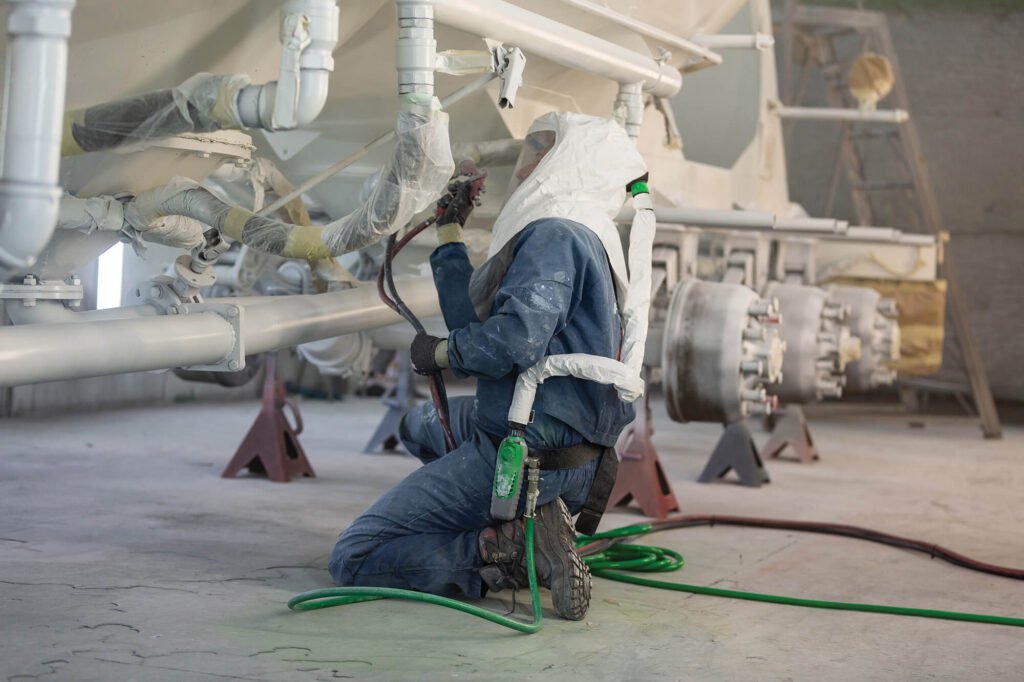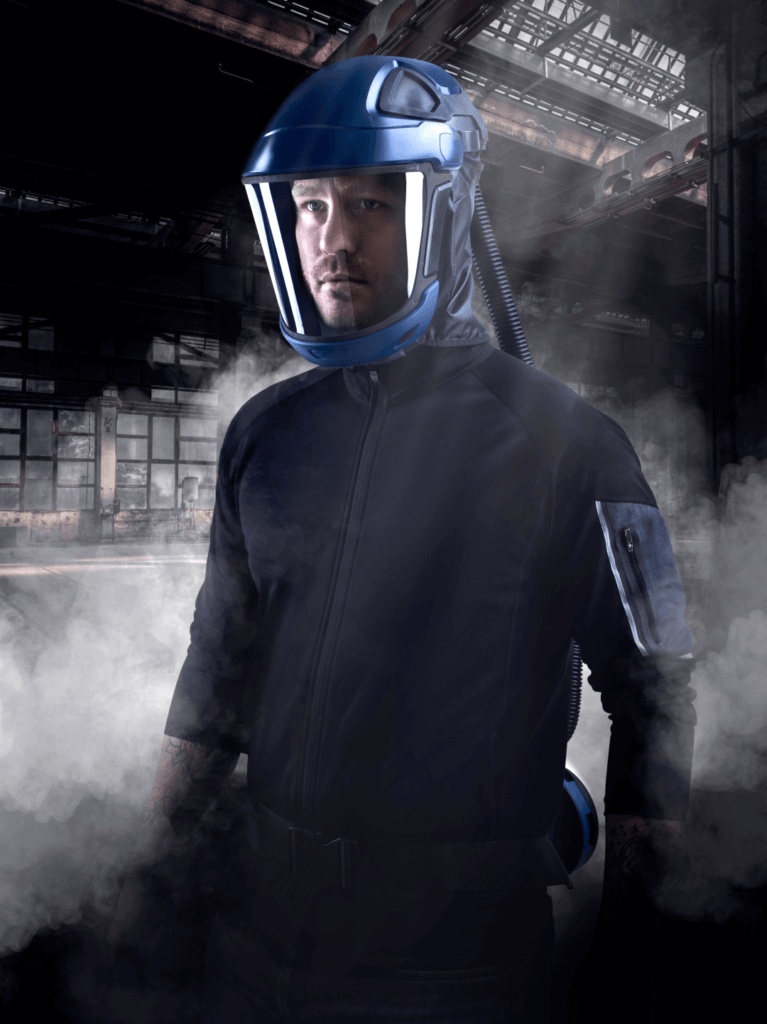Respiratory protection can be provided in a variety of ways, and in many cases, it is important for individuals to be supplied with a dedicated supply of clean air to minimise the risk of short term and long-term health effects that can occur as a result of exposure to airborne contaminants.
This clean air can be provided by a Supplied-Air Respirator (SAR), or a Powered Air Purifying Respirator.
A Supplied-Air Respirator (SAR) works in conjunction with a compressor. The compressor draws air from outside of the user’s immediate environment and passes it through a number of filters to ensure any contamination is removed. The clean air continues through a breathing tube and into the user’s headwear, providing them with clean breathing air to operate within the environment safely.
Although extremely effective, supplied-air respirators can be a little restrictive as the user is attached to the compressor with airlines. A Powered Air Purifying Respirator (PAPR) provides the user with clean air, while also allowing them to move around freely. A PAPR uses a battery powered impeller to draw air in from the user’s immediate environment. Like a supplied-air respirator, the air that is drawn into the system goes through a number of filters, which in the case of a PAPR have been specifically selected for the particular contaminant the user is seeking protection from, before moving into the breathing tube and into the user’s headwear.
Both respirator systems are effective and provide users with the necessary respiratory protection, however consideration should be given to which is the most appropriate solution for each individual’s requirement.


